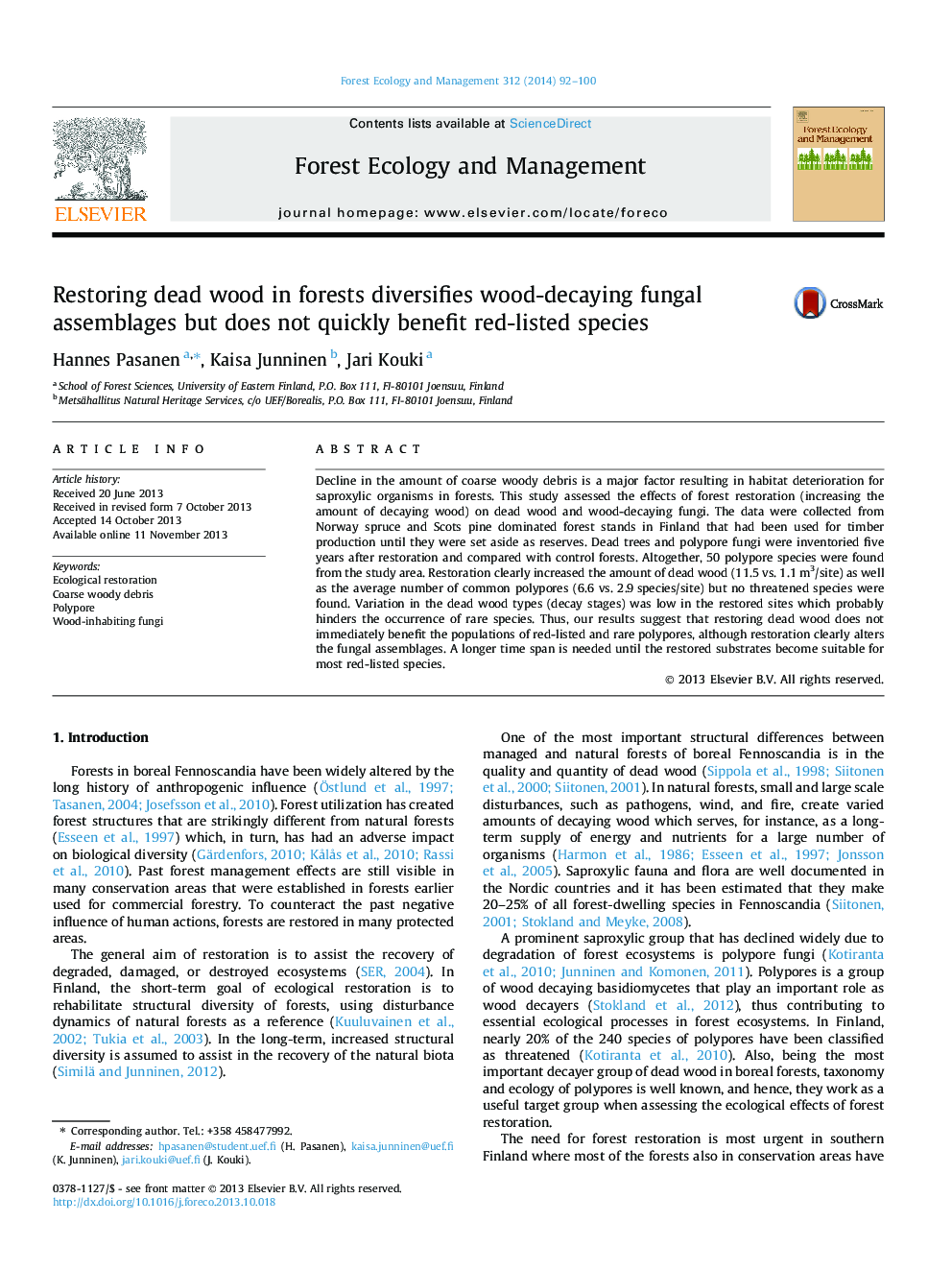| کد مقاله | کد نشریه | سال انتشار | مقاله انگلیسی | نسخه تمام متن |
|---|---|---|---|---|
| 86776 | 159211 | 2014 | 9 صفحه PDF | دانلود رایگان |
• Restoring dead wood does not immediately benefit red-listed polypores.
• Polypore communities in restored areas may not fully correspond to those in natural forests.
• Our results emphasize the importance of long-term monitoring of forest restoration.
Decline in the amount of coarse woody debris is a major factor resulting in habitat deterioration for saproxylic organisms in forests. This study assessed the effects of forest restoration (increasing the amount of decaying wood) on dead wood and wood-decaying fungi. The data were collected from Norway spruce and Scots pine dominated forest stands in Finland that had been used for timber production until they were set aside as reserves. Dead trees and polypore fungi were inventoried five years after restoration and compared with control forests. Altogether, 50 polypore species were found from the study area. Restoration clearly increased the amount of dead wood (11.5 vs. 1.1 m3/site) as well as the average number of common polypores (6.6 vs. 2.9 species/site) but no threatened species were found. Variation in the dead wood types (decay stages) was low in the restored sites which probably hinders the occurrence of rare species. Thus, our results suggest that restoring dead wood does not immediately benefit the populations of red-listed and rare polypores, although restoration clearly alters the fungal assemblages. A longer time span is needed until the restored substrates become suitable for most red-listed species.
Journal: Forest Ecology and Management - Volume 312, 15 January 2014, Pages 92–100
